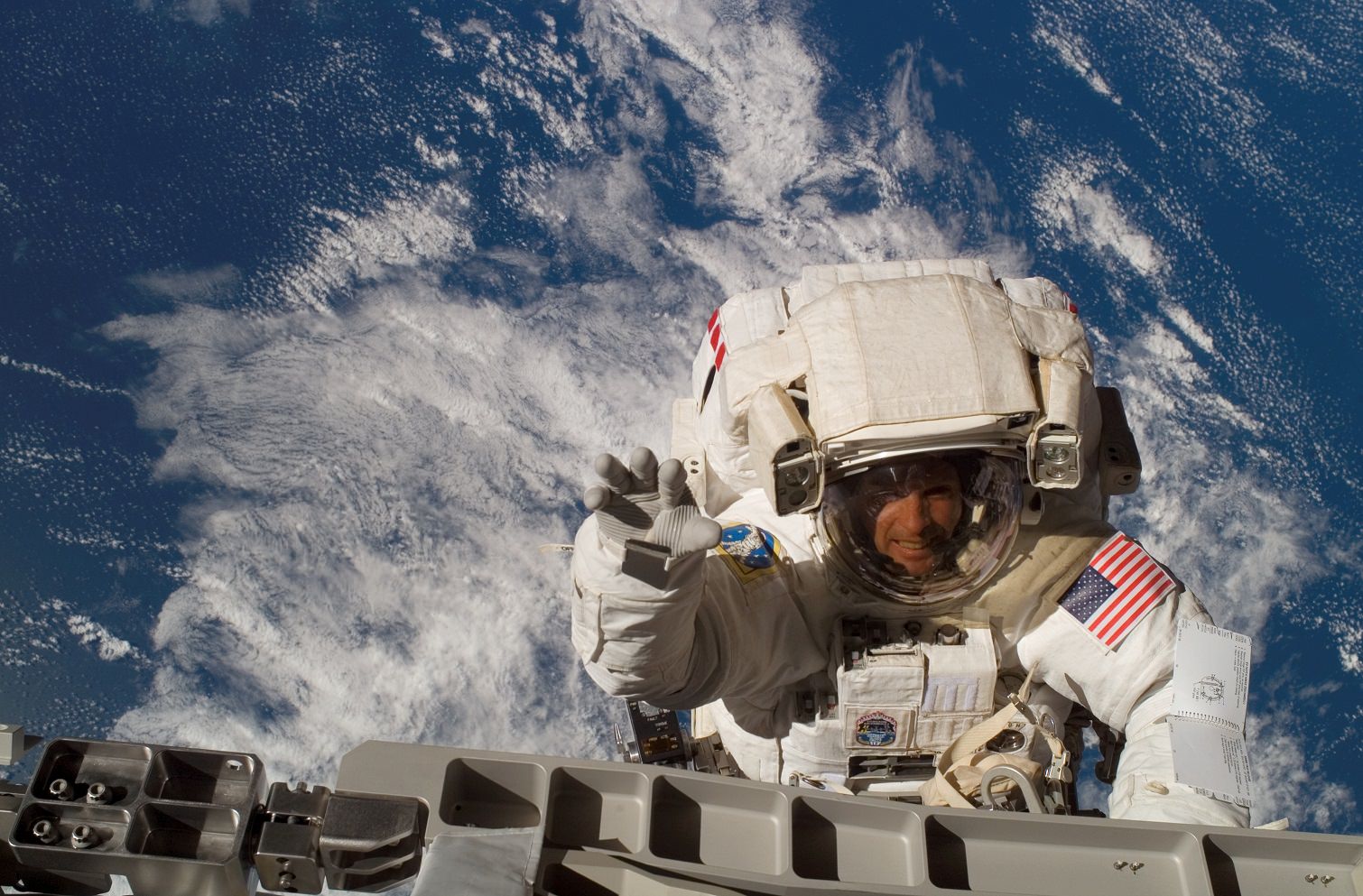

Steve Swanson, commander of Expedition 40, during a spacewalk on 2007 shuttle mission STS-117. Credit: NASA
UPDATE, 11:42 a.m. EDT: Rick Mastracchio and Steve Swanson finished their spacewalk in just 1 hour and 36 minutes, nearly an hour faster than what NASA budgeted for. Early tests show the replacement computer is working well, providing backup once again for the robotics, solar arrays and other systems on station.
Can two astronauts fix a broken computer quickly on the International Space Station, preventing possible problems with the solar arrays and robotics? Watch live (above) to find out.
The NASA spacewalk involving Rick Mastracchio and Steve Swanson is scheduled to start today (April 23) at 9:20 a.m. EDT (1:20 p.m. UTC), with coverage starting around 8:30 a.m. EDT (12:30 p.m. UTC). The spacewalk is scheduled to last 2.5 hours. Bear in mind that the times could change as circumstances arise.
The computer, also called a multiplexer/demultiplexer (MDM), failed for unknown reasons a couple of weeks ago. While the primary computer is working perfectly and the crew is in no danger, things get more risky if the primary computer also breaks. That’s why NASA worked to get the spacewalkers outside as quickly as possible. You can see a full briefing of the rationale here.
As a note, all non-urgent spacewalks have been suspended because NASA is still working on addressing the recommendations given after a life-threatening water leak took place in a NASA spacesuit last summer. Urgent spacewalks can still go ahead because the agency has implemented safety measures such as snorkels and helmet absorption pads in case of another leak.
That said, in the months since NASA has traced the problem to contamination in a filter in the fan pump separator. After replacing the separator, the leaky spacesuit was used during two contingency spacewalks in December with no water problems at all.
How can we explore Saturn’s moon, Enceladus, to include its surface and subsurface ocean, with…
Have you ever wondered how astronomers manage to map out the Milky Way when it's…
NASA astronomers have been continuing to monitor the trajectory of asteroid 2024 YR4. The initial…
Some exoplanets have characteristics totally alien to our Solar System. Hot Jupiters are one such…
Stars form in Giant Molecular Clouds (GMCs), vast clouds of mostly hydrogen that can span…
Let’s dive into one of those cosmic curiosities that's bound to blow your mind: how…